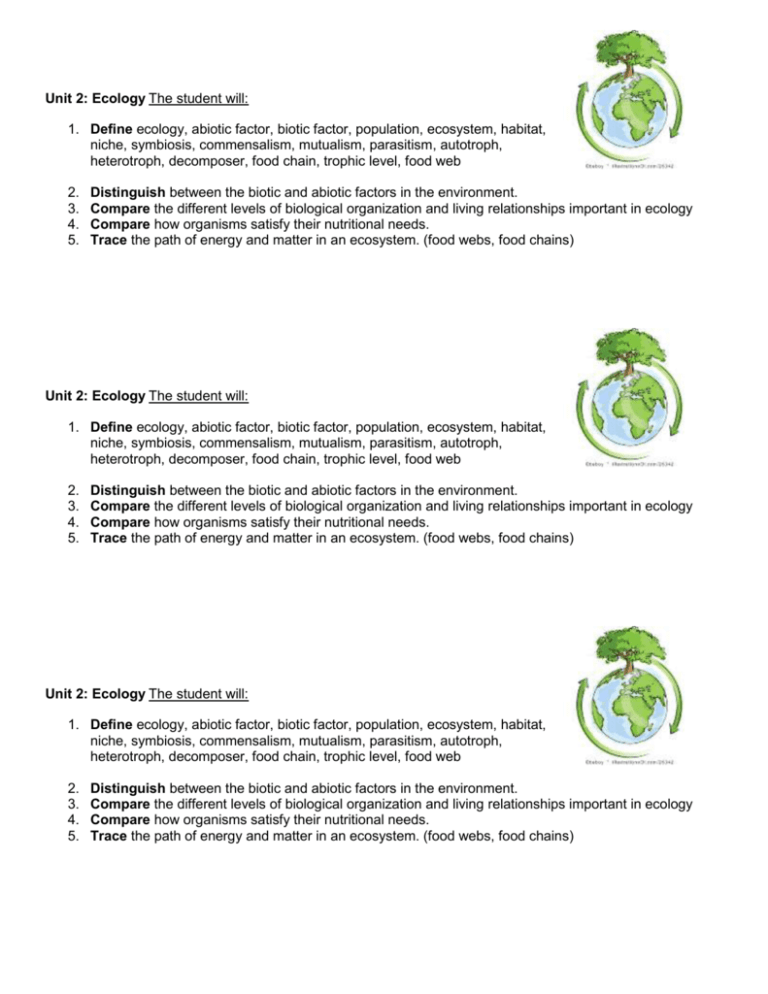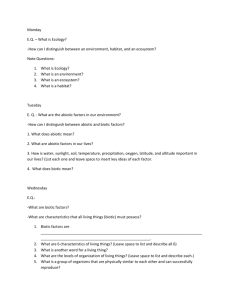Unit 2: Ecology The student will: Define ecology, abiotic factor, biotic
advertisement

Unit 2: Ecology The student will: 1. Define ecology, abiotic factor, biotic factor, population, ecosystem, habitat, niche, symbiosis, commensalism, mutualism, parasitism, autotroph, heterotroph, decomposer, food chain, trophic level, food web 2. 3. 4. 5. Distinguish between the biotic and abiotic factors in the environment. Compare the different levels of biological organization and living relationships important in ecology Compare how organisms satisfy their nutritional needs. Trace the path of energy and matter in an ecosystem. (food webs, food chains) Unit 2: Ecology The student will: 1. Define ecology, abiotic factor, biotic factor, population, ecosystem, habitat, niche, symbiosis, commensalism, mutualism, parasitism, autotroph, heterotroph, decomposer, food chain, trophic level, food web 2. 3. 4. 5. Distinguish between the biotic and abiotic factors in the environment. Compare the different levels of biological organization and living relationships important in ecology Compare how organisms satisfy their nutritional needs. Trace the path of energy and matter in an ecosystem. (food webs, food chains) Unit 2: Ecology The student will: 1. Define ecology, abiotic factor, biotic factor, population, ecosystem, habitat, niche, symbiosis, commensalism, mutualism, parasitism, autotroph, heterotroph, decomposer, food chain, trophic level, food web 2. 3. 4. 5. Distinguish between the biotic and abiotic factors in the environment. Compare the different levels of biological organization and living relationships important in ecology Compare how organisms satisfy their nutritional needs. Trace the path of energy and matter in an ecosystem. (food webs, food chains)









